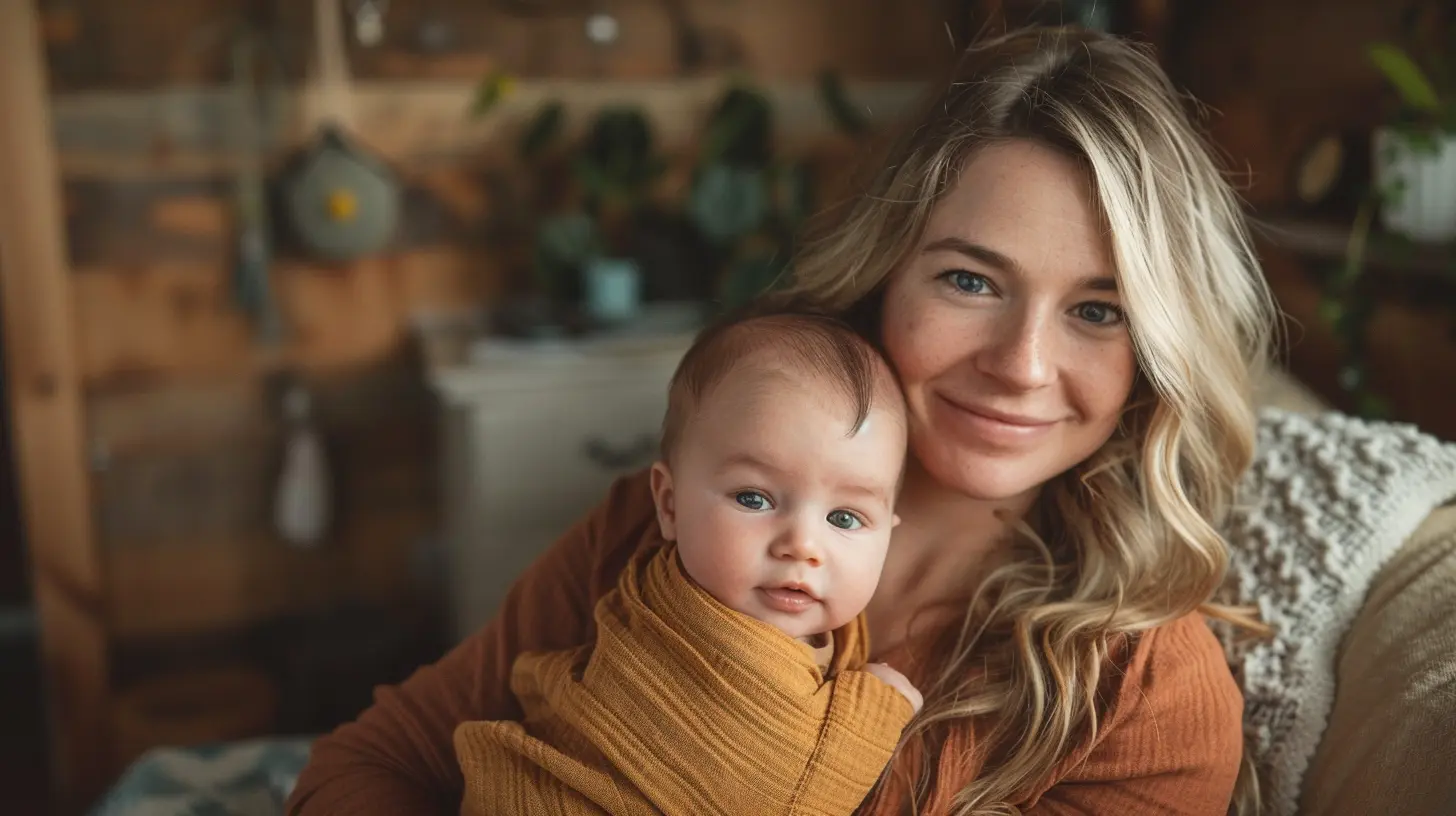The Best Burping Techniques for Your Newborn
26 May 2025
Bringing a newborn into the world is an incredible experience, but let's be real—there's a lot to figure out. One of the most crucial but often overlooked aspects of baby care? Burping. Yes, something as simple as helping your little one release trapped air can make a world of difference. A well-burped baby is a happier baby (and a happier baby means a more rested parent!).
If you're scratching your head wondering how to master the art of burping, don’t worry—you’re not alone. Burping techniques are essential to prevent discomfort, gas buildup, and those dreaded crying fits. In this guide, we’ll walk you through the best burping techniques for your newborn so you can handle this task like a pro. 
Why Is Burping Your Baby Important?
Babies tend to swallow air while feeding, whether they're breastfeeding or bottle-feeding. That trapped air needs to escape, or it can lead to gas, discomfort, and even spit-up. If you've ever seen your little one squirming and fussing after a feed, they might just need a good burp.Think of it like drinking a fizzy soda too quickly—if you don’t release that built-up air, it can cause bloating and discomfort. Babies don’t have the ability to burp on their own yet, so they rely on you to help them out. 
When Should You Burp Your Baby?
Timing is everything! Some babies need to be burped frequently, while others barely swallow any air at all. Here are some general guidelines:- During feeding: If your baby seems fussy mid-feed, pause and give burping a try before continuing.
- After feeding: Always burp your baby once they’ve finished eating to release any trapped air.
- If they’re squirming or pulling away from the bottle/breast: These are signs that they might be uncomfortable due to gas buildup.
Keep in mind that every baby is different, so it may take some trial and error to figure out what works best. 
The Best Burping Techniques for Your Newborn
Now that you know why and when to burp your baby, let’s get into the how. There are several burping techniques parents swear by, and finding the right one depends on your baby’s comfort and your preference.1. Over-the-Shoulder Method
This is probably the most common burping technique—and for good reason! It’s simple, effective, and helps keep your baby upright.How to do it:
1. Hold your baby against your chest, resting their chin on your shoulder.
2. Support their bottom with one hand and gently pat or rub their back with the other.
3. Keep a burp cloth handy—just in case!
This position works well because your baby is upright, letting gravity do some of the work. Plus, the close contact can be soothing for them.
2. Sitting Up on Your Lap
This method is a great alternative if your baby doesn’t seem to burp easily over the shoulder.How to do it:
1. Sit your baby upright on your lap, supporting their chest and head with one hand.
2. Use the other hand to gently pat or rub their back.
3. Slightly lean them forward while keeping them steady.
This technique helps if your baby tends to be gassy because it puts gentle pressure on their tummy, encouraging gas to escape.
3. Laying Across Your Lap
If your baby seems extra gassy or struggles with spit-up, this position might do the trick.How to do it:
1. Lay your baby face-down across your lap, making sure their head is turned to the side.
2. Support their head with one hand to keep them comfortable.
3. Gently pat or rub their back with the other hand.
The slight pressure of their tummy against your lap can help release gas bubbles more easily.
4. Walking and Bouncing
Some babies need a little movement to help them burp. If your little one is particularly fussy, adding gentle motion can make all the difference.How to do it:
1. Hold your baby upright against your chest.
2. Walk around, gently bouncing them while patting their back.
3. Try rhythmic, gentle movements—babies love motion!
The combination of movement and gentle patting can be soothing and effective, especially if traditional burping methods aren’t working. 
What If Your Baby Doesn’t Burp?
Sometimes, no matter how hard you try, your baby just won’t let out a burp. That’s okay! Not every baby needs to burp after every feeding. Here’s what to keep in mind:- Wait a few minutes and try again. Sometimes, gas takes a moment to work its way up.
- Switch techniques and see if a different position works better.
- Observe their behavior—if they seem content and comfortable, they might not need to burp.
If your baby frequently struggles with gas and seems uncomfortable, you may want to check their feeding technique. A good latch during breastfeeding or an anti-colic bottle can help minimize air intake.
Extra Tips for Successful Burping
Want to make burping even easier? Here are some pro tips:✅ Use gentle, firm pats – Think of light taps rather than hard slaps. A steady rhythm works best.
✅ Relax and be patient – Some babies burp quickly, while others take a little time.
✅ Try different positions – Every baby is different, so experiment with various techniques.
✅ Burp breaks during feeding – If your baby seems fussy, try burping midway through.
✅ Keep a burp cloth handy – Spit-up is totally normal, and having a cloth nearby will save your clothes from unwanted messes!
The Bottom Line
Burping your newborn may not be the most glamorous part of parenting, but it’s definitely one of the most important. Helping your baby relieve trapped gas can prevent fussiness, discomfort, and sleepless nights. Whether you go with the classic over-the-shoulder technique, the lap method, or a little bouncing action, the key is to find what works best for your little one.At the end of the day, trust your instincts. Soon enough, you’ll be a burping pro, ensuring your baby stays as comfortable and happy as possible. And remember—if your baby doesn’t always burp, it’s okay. Every little one is different, and as long as they seem content, you’re doing just fine.
Cheers to happy, well-burped babies and (hopefully) a little more sleep for you!
all images in this post were generated using AI tools
Category:
Newborn CareAuthor:

Zelda Gill
Discussion
rate this article
3 comments
Kismet McQuaid
Great tips! Very helpful advice!
June 23, 2025 at 3:14 AM

Zelda Gill
Thank you! I'm glad you found the tips helpful!
Jessica Becker
Great tips in this article! Mastering burping techniques is such an important part of caring for your newborn. Remember, each baby is unique, so it might take some time to find what works best for your little one. Stay patient, you’re doing an amazing job!
June 11, 2025 at 3:00 AM

Zelda Gill
Thank you for your kind words! Yes, every baby is different, and patience is key. We're glad you found the tips helpful!
Julia Cruz
Mastering burping techniques can enhance your newborn's comfort and digestion, fostering a peaceful feeding experience. Patience and practice make perfect—every baby is unique!
June 7, 2025 at 3:53 AM

Zelda Gill
Thank you for your insightful comment! Absolutely, every baby is different, and mastering burping techniques can significantly impact their comfort during feeding.



